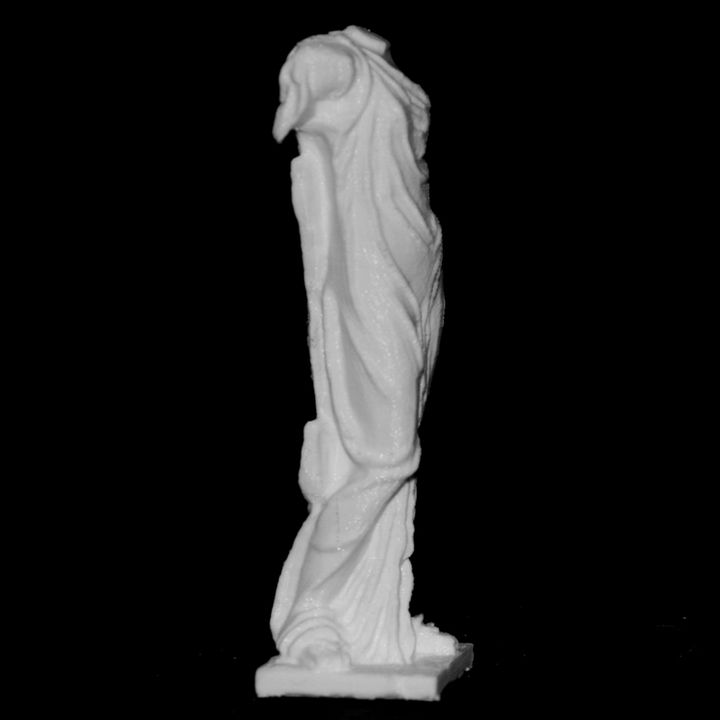
Aphrodite at the Royal Ontario Museum, Canada
myminifactory
The iconic representation of Venus Genetrix showcases the Roman goddess Venus in her role as Genetrix (mother), a title she held dear to the Julio-Claudian dynasty's heart. They proudly claimed her as their ancestral figure, following Julius Caesar's precedent who also acknowledged her heritage. By embracing this historical tie, a distinctively Roman label is applied to an iconic type of Aphrodite that originated with the Greeks. On the eve of the pivotal battle at Pharsalus (48 BC), Julius Caesar made a vow to dedicate a temple in Rome to Venus, his supposed ancestral goddess. To fulfill his promise, he erected a magnificent temple of Venus Genetrix within the newly constructed forum. Sources from that time identify the cult statue in the temple as the work of a renowned Greek sculptor, Arkesilaos. Two types, depicted in numerous Roman examples carved in marble, bronze, and terra cotta, are fiercely debated among scholars for their representation as the draped Venus Genetrix type. In addition to the described variant, another version features Venus cradling an infant Eros on her shoulder. This remarkable object is part of "Scan The World", a non-profit initiative launched by MyMiniFactory that aims to create a comprehensive digital archive of fully 3D printable sculptures, artworks, and landmarks from across the globe for public access at no cost. Scan The World is an open-source community effort; if you have intriguing items nearby and would like to contribute, email stw@myminifactory.com to discover how you can be a part of this project.
With this file you will be able to print Aphrodite at the Royal Ontario Museum, Canada with your 3D printer. Click on the button and save the file on your computer to work, edit or customize your design. You can also find more 3D designs for printers on Aphrodite at the Royal Ontario Museum, Canada.
